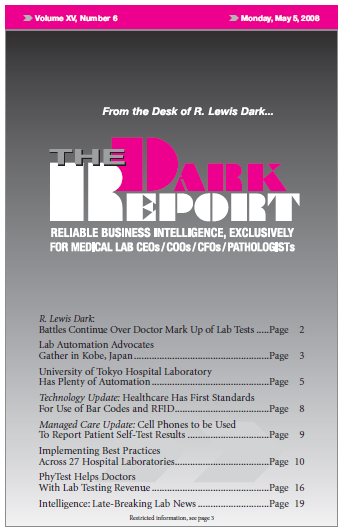THREE ORGANIZATIONS have jointly developed information technology standards to be used in identifying patients, drugs, and medical devices. These standards use bar code, radio frequency identification (RFID), and two-dimensional symbol technologies. The American National Standards Institute (ANSI) recently approved the first part of this new data standard, which is called “Positive Identification for Patient Safety, …
Healthcare Has First Standards for Use of Bar Codes and RFID Read More »
To access this post, you must purchase The Dark Report.


